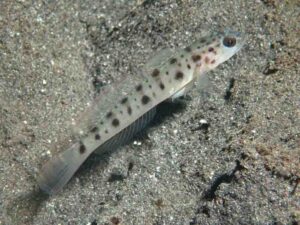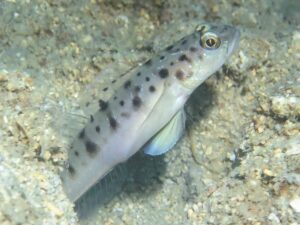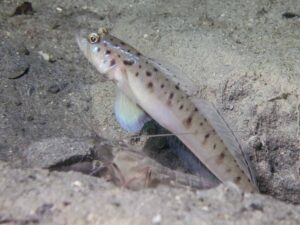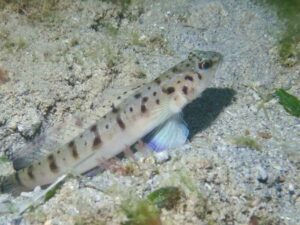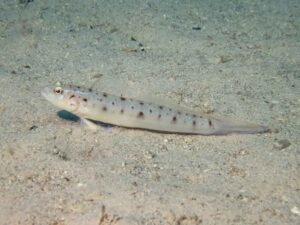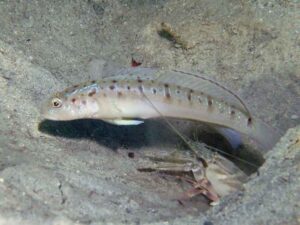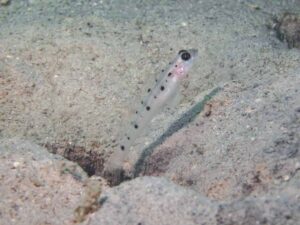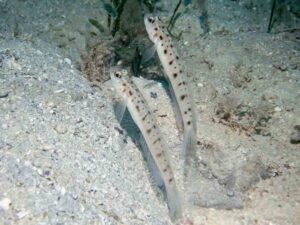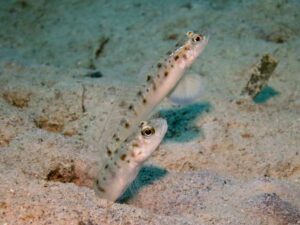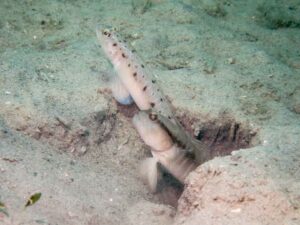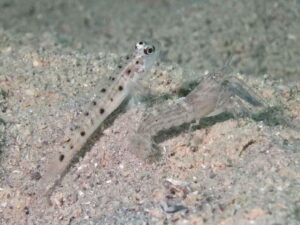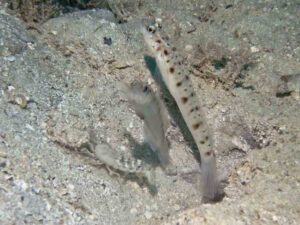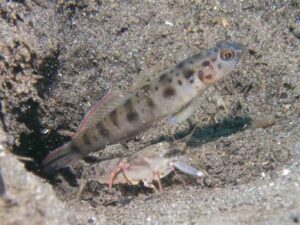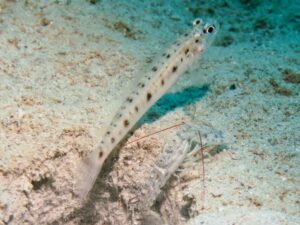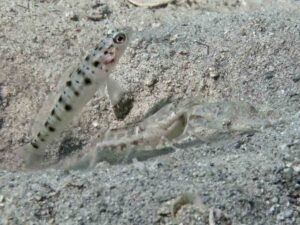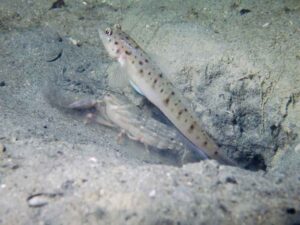Twinspot Shrimpgoby
Vanderhorstia ambanoro
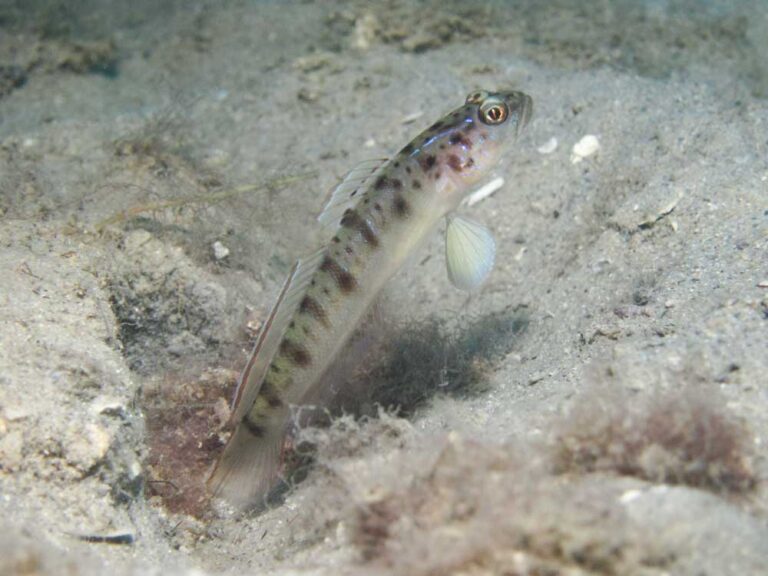
Twinspot Shrimpgoby
Vanderhorstia ambanoro
(Fourmanoir, 1957)
Description
Body design
This is a medium sized (up to 7.5 cm) pale grey goby with eight pairs of dark brown blotches joined by indistinct brown bars along each side. Between each of these are smaller dark dots in rows of three.
The head continues the body pattern of a white underside and grey upper half with darker spots. It is decorated with iridescent blue dots, and an oblique streak dorsally. Other reflective blue spots outline the brown blotches along the body.
Fin design
The dorsal and caudal fins are bordered by a subterminal blue-outlined red line along the upper edge. The first dorsal fin has rows of blue-outlined red spots a single row of which is also present on the second dorsal fin.
The pelvic fin is pale yellow with a blue border decorated with three rows of dark-edged red bands.
The pectoral fin is translucent with a white base.
The anal fin is purple with red between the rays, a pattern that is repeated on the lower half of the caudal fin.
Diagnostic features
Compared with others of its genus this is a very plain fish recognisable by the line of lateral dark spots on a pale background. It is larger than most Vanderhorstia Shrimpgobies, abundant and conspicuous as it hovers in the vicinity of one of its burrow entrances.
Similar species
Vanderhorstia phaeosticta is not particularly similar but is the other member of this genus that is commonly encountered roaming the subtidal sea bed.
Other names
Ambanoro Goby, Ambanoro Prawn-goby, Twin-spotted Shrimp Goby, Twin-spotted Shrimp-goby
Etymology
The species is named for Ambanoro Bay, Nossi-Bé, Mozambique Channel, Madagascar, the type locality.
Natural History
Habitat
Mostly in 5 to 30 m depth. The substrate is usually fine sand and silt. usually on bare sand areas but occasionally in Halophila seagrass beds. We have found this goby in several sites in Gizo harbour in still silty conditions but, significantly not in the Logha channel where the substrate is less silty and there is greater current.
In Australia, it is very common on the flat white silty sand of the Low Isles anchorage, well away from the fringing reef at 6 to 10 metres.
Behaviour
Hover or perch at or near a burrow entrance. Less timid than other Vanderhorstia species. They are quite confident and will, while still hovering vertically, slowly move away from the burrow entrance when approached. When they stop it will often be at an alternative entrance to the same burrow system. From there they will move off seemingly randomly across the sea bed using any burrow as needed.
Burrow invaders
This goby is sometimes plagued by freeloaders using its burrow. The image shows an individual who was being pestered by a dart, two sleeper gobies and three lurker gobies. None of which showed any inclination to move away from the entrance.
Distribution
Published distribution
Red Sea and East Africa, Madagascar, Maldive Islands to Micronesia (Palau, Marshall Islands), Caroline Islands, Mariana Islands and Samoa Tonga, New Caledonia and Great Barrier Reef to Yaeyama Islands. Most of the East Indian region (Indonesia, Philippines, Papua New Guinea, Solomon Islands), but not yet recorded from Andaman Sea, Java Sea and southern South China Sea.
Our records
Solomon Islands; Kolombangara, Gizo Island, Santa Isabel Island, Guadalcanal.
Papua New Guinea; Normanby Island, New Britain, New Ireland.
Australia; Fitzroy Island, Low Isles and Lizard Island, Great Barrier Reef.
Associated Shrimp species
Associated Shrimps (six shrimps)
Diagonal Barred Snapping Shrimp, Alpheus rapacida
Mottled Spot-tail Snapping Shrimp, Alpheus species 7
Pigpen Snapping Shrimp, Alpheus rapacida
Red-Whiskered Snapping Shrimp, Alpheus species 11
Tasselled Snapping Shrimp, Alpheus species 14
Titan Snapping Shrimp, Alpheus species 15

